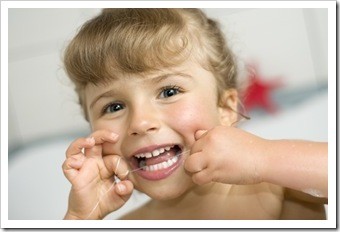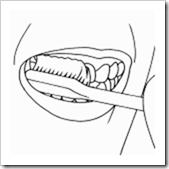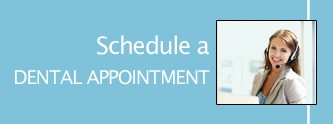What is Recommended for Healthier Teeth?
by Dr. Rita Dargham D.M.D.
Read What is Recommended for Healthier Teeth? by Dr. Rita Dargham D.M.D. to learn more about Grove Smiles® Dentistry and our Dentistry office in Coconut Grove, FL.
We look forward to serving you! Call - 305-858-0505.
 The ADA recommends the following for good oral hygiene:
The ADA recommends the following for good oral hygiene:
- Brush your teeth twice a day with an ADA-accepted fluoride toothpaste. Replace your toothbrush every three or four months, or sooner if the bristles are frayed. A worn toothbrush won’t do a good job of cleaning your teeth.
- Clean between teeth daily with floss or an interdental cleaner. Tooth decay–causing bacteria still linger between teeth where toothbrush bristles can’t reach. This helps remove the sticky film on teeth called plaque and food particles from between the teeth and under the gum line.
- Eat a balanced diet and limit between-meal snacks.
- Visit your dentist regularly for professional cleanings and oral exams.
Antimicrobial mouth rinses and toothpastes reduce the bacterial count and stop bacterial activity in dental plaque, which can cause gingivitis, an early, reversible form of periodontal (gum) disease. ADA-Accepted antimicrobial mouth rinses and toothpastes have substantiated these claims by demonstrating significant reductions in plaque and gingivitis. Fluoride mouth rinses help reduce and prevent tooth decay. Clinical studies have demonstrated that use of a fluoride mouth rinse and fluoride toothpaste can provide extra protection against tooth decay over that provided by fluoride toothpaste alone. Fluoride mouth rinse is not recommended for children age six or younger because they may swallow the rinse. Consumers should always check the manufacturer’s label for precautions and age recommendations and talk with their dentist about the use of fluoride mouth rinse.
Talk to your dentist about what types of oral care products will be most effective for you. The ADA Seal on a product is your assurance that it has met ADA criteria for safety and effectiveness. Look for the ADA Seal on fluoride toothpaste, toothbrushes, floss, interdental cleaners, oral irrigators, mouth rinses and other oral hygiene products.
What is plaque?
Plaque is a sticky film of bacteria that forms on teeth and gums. Following a meal or snack, the bacteria in plaque release acids that attack tooth enamel. Repeated attacks can cause the enamel to weaken, eventually causing tooth decay. Many of the foods we eat cause plaque bacteria to produce acids. If you snack often, you could be having acid attacks all day long. Plaque that is not removed with thorough daily brushing and cleaning between teeth can eventually harden into calculus or tartar.
Plaque also produces substances that irritate the gums, making them red, tender or bleed easily. After a while, gums may pull away from the teeth. Pockets form and fill with more bacteria and pus. If the gums are not treated, the bone around the teeth can be destroyed. The teeth may become loose or have to be removed. In fact, periodontal (gum) disease is a main cause of tooth loss in adults.
One way to prevent tooth decay and periodontal (gum) disease is by eating a balanced diet and limiting the number of between-meal snacks. If you need a snack, choose nutritious foods such as raw vegetables, plain yogurt, cheese or a piece of fruit.
What are some tips for daily oral care?
The best way to remove decay-causing plaque is by brushing and cleaning between your teeth every day. Brushing removes plaque from the tooth surfaces.
Brush your teeth twice a day, with a soft-bristled brush. The size and shape of your brush should fit your mouth, allowing you to reach all areas easily. Use a toothpaste that contains fluoride, which helps protect your teeth from decay. When choosing any dental product, look for the American Dental Association Seal of Acceptance, an important symbol of a dental product’s safety and effectiveness.
Cleaning between the teeth once a day with floss or interdental cleaners removes plaque from between the teeth, areas where the toothbrush can’t reach. It is essential in preventing periodontal (gum) disease.
By taking care of your teeth, eating a balanced diet and visiting your dentist regularly, you can have healthy teeth and an attractive smile your entire life. Follow these tips to keep your teeth and mouth clean.
How do I brush my teeth?

- Proper tooth brushing technique.Place your toothbrush at a 45-degree angle against the gums.
- Move the brush back and forth gently in short (tooth-wide) strokes.
- Brush the outer tooth surfaces, the inner tooth surfaces, and the chewing surfaces of the teeth.
- Use the “toe” of the brush to clean the inside surfaces of the front teeth, using a gentle up-and-down stroke.
- Brush your tongue to remove bacteria and freshen your breath.
How do I floss my teeth?

- Break off about 18 inches of floss and wind most of it around one of your middle fingers. Wind the remaining floss around the same finger of the opposite hand. This finger will take up the floss as it becomes dirty. Hold the floss tightly between your thumbs and forefingers.
- Guide the floss between your teeth using a gentle rubbing motion. Never snap the floss into the gums.
- When the floss reaches the gum line, curve it into a C shape against one tooth. Gently slide it into the space between the gum and the tooth.
- Hold the floss tightly against the tooth. Gently rub the side of the tooth, moving the floss away from the gum with up and down motions.
- Repeat this method on the rest of your teeth.
- Don’t forget the back side of your last tooth.
People who have difficulty handling dental floss may prefer to use another kind of interdental cleaner. These aids include special brushes, picks or sticks. If you use interdental cleaners, ask your dentist about how to use them properly, to avoid injuring your gums.
For Your Health,
Dr. Rita Dargham D.M.D.










